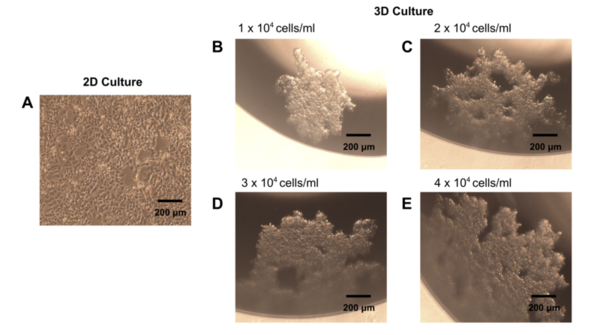Phospholipase A2 increases the sensitivity of doxorubicin induced cell death in 3D breast cancer cell models
(1) Saint Paul Preparatory Seoul, 50-11 Banpo-dong, Seocho-gu, Seoul, Republic of Korea, (2) Department of Biological Science, University of Suwon, Wau-ri, Bongdam-eup, Hwaseong, Gyeonggi-do, Republic of Korea
https://doi.org/10.59720/21-201
Doxorubicin is a common drug used for various cancer treatments including breast, ovarian, bladder, and lung cancer. However, inefficient penetration of cancer drugs into the interior of the three-dimensional (3D) tumor tissue limits the drug delivery. Increasing the dosage of drugs is an unacceptable solution, as patients may have a toxic reaction. Therefore, efficient drug delivery is crucial. We hypothesized that the addition of phospholipase A2 (PLA2), an enzyme found in bee venom that hydrolyzes the bond connecting fatty acid and glycerol, would increase the permeability of the drug for efficient drug penetration. We designed a 3D spheroid tumor model because it mimics an actual tumor environment better than the monolayer two-dimensional (2D) cell culture. We performed dye permeability assay using 5-chloromethylfluorescein diacetate (CMFDA), a green fluorescent probe, on 3D spheroid cells with concentration-dependent PLA2 treatment. We found that 1 mM PLA2 had the highest percentage of green fluorescence cells, indicating the highest permeability. Subsequently, we hypothesized that cotreatment of PLA2 and doxorubicin may increase drug sensitivity of doxorubicin. After analyzing the half-maximal inhibitory concentration, IC50 (639.8 nM) of doxorubicin on the MDA-MB-231 3D spheroid, the cotreatment of PLA2 and doxorubicin exhibited lower 3D spheroid cell viability compared to doxorubicin treatment alone. This indicates that PLA2 may be a useful drug to assist in more effective doxorubicin treatment for breast cancer. Increased efficiency in drug delivery would allow lower concentrations of drugs to be used, minimizing damage to normal cells.
This article has been tagged with: